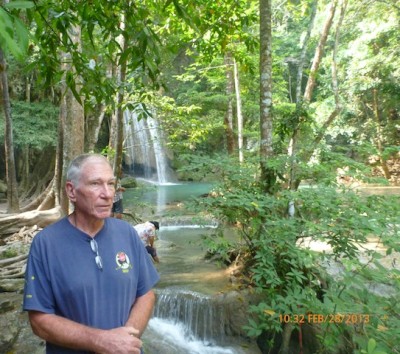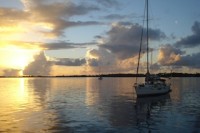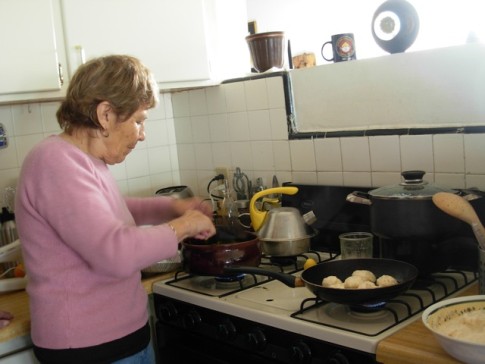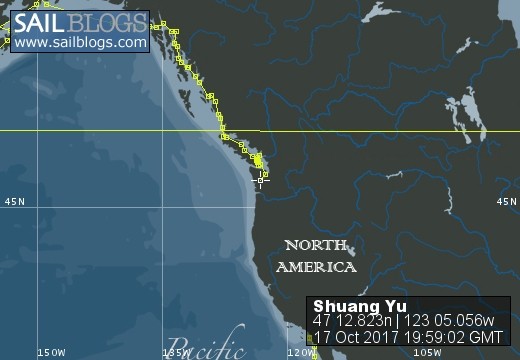
Joy of Cruising
17 October 2017 | Boat position at Shelton: 47°12.82’N; 123°05.01’W
16 October 2017 | Boat position at Shilshole Marina: 47°40.65’N; 122°24.59’W
15 October 2017 | Boat position at Friday Harbor: 48°32.20’N; 123°0.59’W
27 September 2017 | Boat position on Granville Island: 49°16.35’N; 123°08.24’W
26 September 2017 | Boat position on Granville Island: 49°16.35’N; 123°08.24’W
22 July 2017 | Boat position at Granville Island: 49°16.35’N; 123°08.24’W
21 July 2017 | Boat position at Vancouver Rowing Club, Canada: 49°17.77’N; 123°07.85’W
20 July 2017 | Boat position at the Vancouver Rowing Club, Canada: 49°17.77’N; 123°07.85’W
19 July 2017 | Boat position at the Vancouver Rowing Club: 49°17.77’N; 123°07.85’W
18 July 2017 | Boat position in Active Pass: 48°51.64’N; 123°18.54’W
17 July 2017 | Boat position at Otter Cove, Pender Island, Canada: 48°47.84’N; 123°18.51’W
15 July 2017 | Boat position at Port Bedwell, Pender Island, Canada: 48 44.97'N; 123 13.97'W
14 July 2017 | Boat position at RVYC: 48 27.19'N; 123 17.73'W
13 July 2017 | Boat position at RVYC: 48 27.19'N; 123 17.73'W
12 July 2017 | Boat position at SNSYC: 48 40.44'N; 123 25.02'W
12 July 2017 | Boat position at SNSYC: 48 40.44'N; 123 25.02'W
11 July 2017 | Boat position at SNSYC: 48 40.44'N; 123 25.02'W
10 July 2017 | Boat position at Ganges: 48 51.00'N; 123 29.53'W
09 July 2017 | Boat position at Ganges: 48 51.00'N; 123 29.53'W
08 July 2017 | Boat position at Montague Harbour: 48 53.63'N; 123 24.03'W
Kanchanaburi
28 February 2013 | Boat position at
Pam Lau

Picture: Ted in front of Erawan Falls - what a paradise - but during WWII, 100,000 men, mainly Australian and English POWs and "contract" workers, died of dysentery, hunger, malaria and bad treatment at the hands of the Japanese building the infamous Burma Railroad through the region. (Coincidentally, two weeks later Ted was hospitalized for four days with dysentery).
We decided to leave Phuket for a week or so to escape the fumes and dust from the woodwork going on inside the boat. Bo, the owner/cook from the Harddock Cafe, recommended a place to visit on our way to Chiang Mai, which is called Kanchanaburi. It sounded interesting so we made that as one of our destinations. When we entered the bus station we found ticket windows on both sides of the lobby. I did not pre-book because I was not sure which bus line to use. Seeing all the bus lines, I still did not know which line to take. There were many "VIP" bus companies and a "Green Bus" line, which is a luxury long distance touring company, that seemed quite expensive based on our budget. On the other hand Green Buses are comfortable, roomy, non-stop and they provide boxed meals. I asked the person at the information counter and he pointed me directly to the government bus window. It was the best choice because it was much cheaper and it had air conditioning and reclining seats. They also provided us with pillows and blankets. The bus was in good condition, nearly new, but it was still a tiresome 12-hour trip from Phuket to Bangkok. We left around 14:30 and arrived in Bangkok 4:30 in the morning. On the way we stopped at a large cafeteria where the company provided dinner for all passengers. It was different. The bus stopped and the driver ushered us out and told us that we had twenty minutes. Several uniformed women stood outside the cafeteria checking our bus tickets and motioning us where to sit. On our table eight of us shared a large pot of plain white rice porridge along with several plates of sauté and pickled vegetables and salty eggs. We wolfed the down our meal, made a pit stop at the lavatory, rushed back to the bus and were on the road almost immediately. We added up the bus fares from Phuket to Bangkok and Bangkok to Chiang Mai. The cost was about $35 for each of us, which was a good value for a distance of 1,530 kilometers (950 miles).
Arriving in Bankok at 04:30, the bus terminal was already jam-packed with buses, minibuses, taxis, motorcycles and people. We were lucky to find someone who spoke a little English. The regular bus to Kanchanaburi was full but a girl showed us where to catch a fast minibus. The minibus sits twelve people including luggage, what a cramped ride. I sat in the back seat with three other ladies and my backpack. It was fortunate that the trip was only about two hours; otherwise I think I would turn into a dead sardine.
A "songthaew" driver approached us as soon as we got off the minibus in Kanchanaburi. A "songthaew" serves as public transportation in some places in Thailand like a taxi or a city bus. It is a pickup with the covered roof over the bed and benches on each side for passengers. The back is totally open so the passengers can get on and off easily. The driver asked if we have a booking for a guesthouse. Ted told him "No". Without delay, he flipped out a brochure and showed us some guesthouses. Exhausted from all night travel, we were ready to take any guesthouse. It turned out that the guesthouse the driver recommended (Noble Night) was reasonable ($17/night) and quaint. We stayed in a "raft house", a bungalow built on a platform behind an island on bank of the River Kwai, the same river as in the movie, "Bridge Over the River Kwai". The hotel is on the noisy main street where all the bars, restaurants, stores and beauty/massage saloons are located but within the sanctuary of the garden and river, it was quiet and calming. We overlooked what appeared to be a muddy lake, overgrown with cattails, grass and water lilies. The occasional cooing of the pigeons in the morning and the sounds of the cicadas in the still of the night gave us a sense of being in the wilderness. The room was small but clean. It also had a toilet and a hose attached next to it for a shower. After a refreshing wash, we dropped into a deep slumber under the cool air from the air-con and away from the dust and heat. We thought we were floating on clouds in heaven.
Before we checked into the guesthouse, we had to wait for the previous guests to check out. We had breakfast at an English pub and then we walked to the military cemeteries. Earlier, as we passed through town we saw at least four "marble orchards" (cemeteries), all the plaques neatly laid out in rows on green carpet-like lawns. Many bouquets of flowers could be seen next to their respective plaques. We stopped at the Beata Mundi Regina War Monument Catholic Church by one of the cemeteries, which we thought was unusual in a Buddhist country. The mission church was devoted to all religions to pray together for the 100,000 people who died during the WW II building of the infamous Burma Railroad.
Not far from the church was the Railroad Museum. Inside, the air-conditioning was cool and away from the torturing hot sun but the real reason we were there was to learn more about the terrible events of WW II. In the early part of the war, the Japanese invaded Southeast Asia. Later, they needed a 415-kilometer (258-mile) stretch of railroad from the west coast of Burma (Myamar) to Kanchanaburi and on to Bangkok to avoid the Allied sea blockade at the Bay of Bengal. The railroad would provide an alternative route to transport supplies from Japan to their newly acquired territories. In addition they would be able to supply a base to enable an attack on India. The engineers estimated the project would take five years to complete. Because the Japanese acquired forced labor from conquered territories and prisoners of war (POWs), they were able to complete the gruesome project in fifteen months. The POWs were mainly English and Australian but there were also Americans, Malaysians, Thais, Indonesians, Europeans and Singaporeans. Contract laborers were mainly Indian and Chinese but most were forced into signing up. The cruelty began with transporting about 6,000 POWs from Singapore to Kanchanaburi (1,970 Kilometers - 1224 miles) for five days and nights in small boxcars, approximately thirty soldiers crammed into 18' x 15' (5.5 x 4.6 meter) cars. It was "a journey from hell" as one prisoner described the experience. They had standing room only in an oven-like boxcar. Many people were sick for lack of air, water and food. The stench of human sweat and excretion in the tropical climate was unbearable in the dark and airless space. Some men died during the journey and others wanted to die. When the survivors arrived at the worksite, the hellish life was just beginning. They suffered from malnutrition, starvation, diseases, injuries, and exhaustion not to mention they were cruelly tortured. The main diseases were dysentery and malaria but tropical ulcers were also a problem. There is a 10-foot high (3.3 meter) bronze statue in the museum depicting three POWs, just skin and bone, wearing only ragged shorts and what is left of their boots. The two on the outside are half dragging and half carrying the man in the middle who has his shorts around his ankles. His genitals are exposed and his feet are just dragging along the ground. Without having to be told it is obvious the man in the middle has dysentery and is barely alive.
The railroad workers worked an 18-hour day and marched at night to the next camp. Over one hundred thousand people died in fifteen months. This equates to 6,667 a month, 222 a day and an average of 9.25 every hour. It is a depressing thought! Our energy was drained after our visit to the museum even if we had not stayed up all night on the bus. No wonder they named the project the "Death Railway". Much of the railway is gone now. The Australian and Thais with the former POWs rescued a small section of the railway for memorial purposes called, "Hellfire Pass". On the following day we actually rode a section of it on an old train as part of a tour. I found a provoking article written by a former POW who painted a vivid description of events at the time. The following is the link to the website: www.dailymail.co.uk/news/article-1254168/monsters-river-kwai
Back in town we joined stream of tourists walking across the bridge over the River Kwai. The bridge was made famous 1957 by David Lean's film "Bridge over the River Kwai". The story was about the railroad construction; however, much of the movie was sanitized for public consumption and it was not filmed in Thailand but in Sri Lanka. There were two bridges constructed during the war on the River of Kwai, one wooden and a steel one. Neither of the bridges survived over the years and in the 1950's a new steel bridge was built, ironically it was made in Tokyo. Now the bridge has become a tourist trap; people from all over the world visit the site. From a historical point of view, the bridge was pointless but from it we could see a large white statute of "Gun Yum", goddess of mercy, on the riverbank. It provided an interesting photo focus point.
Besides the historical aspect of the town, there were other attractions. We took a tour and did some activities such visiting the Erawan Falls, riding on the elephants and bamboo rafting besides riding the train through the "Hellfire Pass". We enjoyed all the activities; they gave us a taste of nature, culture and history of the area. Besides the tour, we enjoyed Kanchanaburi, its food, Thai massage, and the people.
We decided to leave Phuket for a week or so to escape the fumes and dust from the woodwork going on inside the boat. Bo, the owner/cook from the Harddock Cafe, recommended a place to visit on our way to Chiang Mai, which is called Kanchanaburi. It sounded interesting so we made that as one of our destinations. When we entered the bus station we found ticket windows on both sides of the lobby. I did not pre-book because I was not sure which bus line to use. Seeing all the bus lines, I still did not know which line to take. There were many "VIP" bus companies and a "Green Bus" line, which is a luxury long distance touring company, that seemed quite expensive based on our budget. On the other hand Green Buses are comfortable, roomy, non-stop and they provide boxed meals. I asked the person at the information counter and he pointed me directly to the government bus window. It was the best choice because it was much cheaper and it had air conditioning and reclining seats. They also provided us with pillows and blankets. The bus was in good condition, nearly new, but it was still a tiresome 12-hour trip from Phuket to Bangkok. We left around 14:30 and arrived in Bangkok 4:30 in the morning. On the way we stopped at a large cafeteria where the company provided dinner for all passengers. It was different. The bus stopped and the driver ushered us out and told us that we had twenty minutes. Several uniformed women stood outside the cafeteria checking our bus tickets and motioning us where to sit. On our table eight of us shared a large pot of plain white rice porridge along with several plates of sauté and pickled vegetables and salty eggs. We wolfed the down our meal, made a pit stop at the lavatory, rushed back to the bus and were on the road almost immediately. We added up the bus fares from Phuket to Bangkok and Bangkok to Chiang Mai. The cost was about $35 for each of us, which was a good value for a distance of 1,530 kilometers (950 miles).
Arriving in Bankok at 04:30, the bus terminal was already jam-packed with buses, minibuses, taxis, motorcycles and people. We were lucky to find someone who spoke a little English. The regular bus to Kanchanaburi was full but a girl showed us where to catch a fast minibus. The minibus sits twelve people including luggage, what a cramped ride. I sat in the back seat with three other ladies and my backpack. It was fortunate that the trip was only about two hours; otherwise I think I would turn into a dead sardine.
A "songthaew" driver approached us as soon as we got off the minibus in Kanchanaburi. A "songthaew" serves as public transportation in some places in Thailand like a taxi or a city bus. It is a pickup with the covered roof over the bed and benches on each side for passengers. The back is totally open so the passengers can get on and off easily. The driver asked if we have a booking for a guesthouse. Ted told him "No". Without delay, he flipped out a brochure and showed us some guesthouses. Exhausted from all night travel, we were ready to take any guesthouse. It turned out that the guesthouse the driver recommended (Noble Night) was reasonable ($17/night) and quaint. We stayed in a "raft house", a bungalow built on a platform behind an island on bank of the River Kwai, the same river as in the movie, "Bridge Over the River Kwai". The hotel is on the noisy main street where all the bars, restaurants, stores and beauty/massage saloons are located but within the sanctuary of the garden and river, it was quiet and calming. We overlooked what appeared to be a muddy lake, overgrown with cattails, grass and water lilies. The occasional cooing of the pigeons in the morning and the sounds of the cicadas in the still of the night gave us a sense of being in the wilderness. The room was small but clean. It also had a toilet and a hose attached next to it for a shower. After a refreshing wash, we dropped into a deep slumber under the cool air from the air-con and away from the dust and heat. We thought we were floating on clouds in heaven.
Before we checked into the guesthouse, we had to wait for the previous guests to check out. We had breakfast at an English pub and then we walked to the military cemeteries. Earlier, as we passed through town we saw at least four "marble orchards" (cemeteries), all the plaques neatly laid out in rows on green carpet-like lawns. Many bouquets of flowers could be seen next to their respective plaques. We stopped at the Beata Mundi Regina War Monument Catholic Church by one of the cemeteries, which we thought was unusual in a Buddhist country. The mission church was devoted to all religions to pray together for the 100,000 people who died during the WW II building of the infamous Burma Railroad.
Not far from the church was the Railroad Museum. Inside, the air-conditioning was cool and away from the torturing hot sun but the real reason we were there was to learn more about the terrible events of WW II. In the early part of the war, the Japanese invaded Southeast Asia. Later, they needed a 415-kilometer (258-mile) stretch of railroad from the west coast of Burma (Myamar) to Kanchanaburi and on to Bangkok to avoid the Allied sea blockade at the Bay of Bengal. The railroad would provide an alternative route to transport supplies from Japan to their newly acquired territories. In addition they would be able to supply a base to enable an attack on India. The engineers estimated the project would take five years to complete. Because the Japanese acquired forced labor from conquered territories and prisoners of war (POWs), they were able to complete the gruesome project in fifteen months. The POWs were mainly English and Australian but there were also Americans, Malaysians, Thais, Indonesians, Europeans and Singaporeans. Contract laborers were mainly Indian and Chinese but most were forced into signing up. The cruelty began with transporting about 6,000 POWs from Singapore to Kanchanaburi (1,970 Kilometers - 1224 miles) for five days and nights in small boxcars, approximately thirty soldiers crammed into 18' x 15' (5.5 x 4.6 meter) cars. It was "a journey from hell" as one prisoner described the experience. They had standing room only in an oven-like boxcar. Many people were sick for lack of air, water and food. The stench of human sweat and excretion in the tropical climate was unbearable in the dark and airless space. Some men died during the journey and others wanted to die. When the survivors arrived at the worksite, the hellish life was just beginning. They suffered from malnutrition, starvation, diseases, injuries, and exhaustion not to mention they were cruelly tortured. The main diseases were dysentery and malaria but tropical ulcers were also a problem. There is a 10-foot high (3.3 meter) bronze statue in the museum depicting three POWs, just skin and bone, wearing only ragged shorts and what is left of their boots. The two on the outside are half dragging and half carrying the man in the middle who has his shorts around his ankles. His genitals are exposed and his feet are just dragging along the ground. Without having to be told it is obvious the man in the middle has dysentery and is barely alive.
The railroad workers worked an 18-hour day and marched at night to the next camp. Over one hundred thousand people died in fifteen months. This equates to 6,667 a month, 222 a day and an average of 9.25 every hour. It is a depressing thought! Our energy was drained after our visit to the museum even if we had not stayed up all night on the bus. No wonder they named the project the "Death Railway". Much of the railway is gone now. The Australian and Thais with the former POWs rescued a small section of the railway for memorial purposes called, "Hellfire Pass". On the following day we actually rode a section of it on an old train as part of a tour. I found a provoking article written by a former POW who painted a vivid description of events at the time. The following is the link to the website: www.dailymail.co.uk/news/article-1254168/monsters-river-kwai
Back in town we joined stream of tourists walking across the bridge over the River Kwai. The bridge was made famous 1957 by David Lean's film "Bridge over the River Kwai". The story was about the railroad construction; however, much of the movie was sanitized for public consumption and it was not filmed in Thailand but in Sri Lanka. There were two bridges constructed during the war on the River of Kwai, one wooden and a steel one. Neither of the bridges survived over the years and in the 1950's a new steel bridge was built, ironically it was made in Tokyo. Now the bridge has become a tourist trap; people from all over the world visit the site. From a historical point of view, the bridge was pointless but from it we could see a large white statute of "Gun Yum", goddess of mercy, on the riverbank. It provided an interesting photo focus point.
Besides the historical aspect of the town, there were other attractions. We took a tour and did some activities such visiting the Erawan Falls, riding on the elephants and bamboo rafting besides riding the train through the "Hellfire Pass". We enjoyed all the activities; they gave us a taste of nature, culture and history of the area. Besides the tour, we enjoyed Kanchanaburi, its food, Thai massage, and the people.
Comments
| Vessel Name: | Shuang Yu |
| Vessel Make/Model: | Catalina 400 |
| Hailing Port: | San Diego |
| Crew: | Ted Berry and Pam Lau |
| Home Page: | www.sailblogs.com/member/tedandpam/ |
| Social: |

Who: Ted Berry and Pam Lau
Port: San Diego



